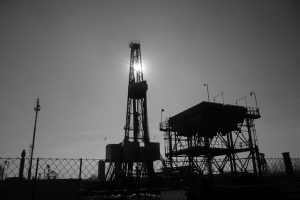Differences Between Onshore and Offshore Drilling
Posted in Fracking,Oil Refinery Law on August 25, 2016
Drilling for oil involves breaking through layers of the earth’s surface to reach deposits of hydrocarbons. Drilling takes place onshore below the subsoil of the earth and offshore below the earth’s seabed.
Onshore drilling
Onshore drilling is done on land and not over water. The rigs are moved in by ground transportation and many times multiple wells are being drilled from at the same site in very close proximity to each other by shifting the rig slightly. Onshore drilling profiles vary from:
- Shallow to deep wells
- Extended reach to ultra-extended reach wells
- Vertical to deviated wells
Offshore drilling
Offshore drilling is done in a remote location off shore over the water. Operators drill below the earth’s seabed as deep as 12,000 feet. These wells are drilled using slender steel pipes and other tools that connect to make a drill sting. Each pipe is about 30 feet long and as the well is drilled deeper more pipes are added to the drill sting.
Drilling safety
Oil rig workers face a number of hazards every day. Knowing how to take extra precautions to avoid an accident is extremely important. Dangers oil rig worker face include:
 Fire – workers work with highly flammable chemicals every day. They also face the threat of a well build up from too much pressure which can lead to an explosion if it’s not corrected in time.
Fire – workers work with highly flammable chemicals every day. They also face the threat of a well build up from too much pressure which can lead to an explosion if it’s not corrected in time.- Falls and falling objects – Oil rig workers work on high platforms creating a risk of falling from high levels, they are at risk for tripping over objects and are also at risk of coworkers dropping told and other objects on them.
- Injury from hazardous machinery – Machines such as drill, spinning machinery and support units such as cranes and forklifts are very loud and make it difficult for workers to communicate with each other when they are hurt or at risk for danger. Workers can actually be crushed by the moving machinery or electrocuted.
